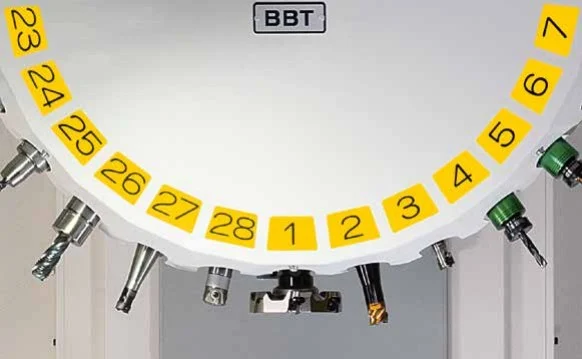Five Common Modern CNC Control Systems: High-Precision Machining Solutions

Fanuc Control Systems
Fanuc control systems are global leaders in CNC (Computer Numerical Control) machining, with the Japanese company Fanuc becoming almost synonymous with CNC machine tools. Renowned for their high reliability, strong compatibility, and user-friendly interface, these systems are widely adapted for various equipment, from lathes to five-axis machining centers. Their core function lies in precisely controlling tool and workpiece movements through digital commands, enabling the machining of complex parts. Whether you’re involved in mold manufacturing or aerospace, Fanuc systems are designed to handle the demands.
The appeal of Fanuc systems stems from their comprehensive functionality and stability. Their G-code (a standardized CNC programming language) allows operators to flexibly program machining paths, while also supporting macro programs for convenient recall of complex instructions during batch production. High-speed, high-precision machining is another significant highlight; through servo motors and advanced motion control algorithms, the system can achieve micron-level accuracy. Furthermore, Fanuc’s interface is intuitively designed, making it quick for even novices to get started. The system also integrates fault diagnosis features, allowing for rapid problem identification and reduced downtime when equipment issues arise.
Key features of Fanuc systems include:
- High Compatibility: Adaptable to various machine tool types, from basic lathes to complex multi-axis equipment.
- Precision Control: Supports high-speed cutting and ultra-precision machining, with error control at the micron level.
- User-Friendly: Intuitive graphical interface and programming environment, lowering the learning curve.
- Strong Reliability: Durable hardware and rapidly updated software.
- Intelligent Diagnostics: Built-in fault detection optimizes maintenance efficiency.
Fanuc systems are virtually ubiquitous. The automotive industry uses them to machine engine components, the aerospace sector relies on them to produce turbine blades, and even the medical industry employs them for manufacturing high-precision implants. Thanks to the system’s modular design, suitable Fanuc models can be found in everything from small workshops to large automated production lines. Their openness also allows third-party developers to customize specialized functions, meeting the specific needs of various industries. For instance, Fanuc can be seamlessly integrated into 3D printing and robotic machining, demonstrating remarkable adaptability.
Siemens Sinumerik Control Systems
Siemens Sinumerik control systems are a major force in the CNC (Computer Numerical Control) sector, with German-based Siemens holding a significant position in global manufacturing due to its strong technological foundation. These systems are known for their high performance and flexibility, suitable for a wide range of equipment from simple milling machines to complex multi-axis machining centers. Their core advantage lies in a modular design that easily adapts to varying machining demands. Whether you operate a small to medium-sized factory or a large automated production line, Sinumerik offers precise CNC solutions.
Sinumerik systems excel in intelligence and ease of use. They support programming interfaces like ShopMill and ShopTurn (graphical programming environments), enabling operators to quickly get started, even if they are unfamiliar with G-code. The system also incorporates advanced motion control technology, ensuring precision and stability during high-speed machining. Its network connectivity is another standout feature, allowing seamless integration into Industry 4.0 environments for remote monitoring and data analysis. The fault diagnosis system further enhances its appeal, detecting issues in real-time and reducing equipment downtime.
Key features of Sinumerik systems include:
- Graphical Programming: ShopMill/ShopTurn interfaces simplify complex machining setups.
- High-Precision Control: Supports micron-level machining, ideal for high-precision parts.
- Network Integration: Compatible with the Industrial Internet of Things, facilitating data sharing and remote management.
- Modular Design: Flexible adaptation to different machine tools and production needs.
- Intelligent Maintenance: Built-in diagnostic tools for rapid fault location.
Sinumerik systems shine across various industries. The automotive manufacturing sector uses them for machining gearbox and engine components, while aerospace relies on them to produce high-precision turbine parts. Their flexibility also makes them popular in mold manufacturing and metal cutting. Especially in scenarios requiring complex surface machining, Sinumerik’s five-axis control technology handles it with ease. The system also supports integration with robots and 3D printing equipment, making it particularly suitable for smart manufacturing and customized production needs. Regardless of scale, Sinumerik provides factories with efficient and reliable CNC support.
Heidenhain Control Systems
Heidenhain control systems are a dark horse in the CNC (Computer Numerical Control) field, with the German company Heidenhain enjoying a strong reputation for precision and innovation. These systems are specifically designed for high-precision machining, particularly suited for workpieces requiring complex geometries. From milling machines to multi-axis machining centers, Heidenhain provides stable and reliable control. Its intuitive user interface and programming methods are highly favored by operators, especially with widespread adoption in the European market.
The highlight of Heidenhain systems lies in their programming flexibility and ultra-high precision. They utilize Klartext (a conversational programming language), allowing operators to write programs in a near-natural language manner, thereby reducing the learning curve. The system also supports five-axis machining and complex surface machining, ensuring smooth tool paths and excellent surface finish through advanced motion control algorithms. Its dynamic calibration function is also powerful, automatically compensating for machine tool errors and improving machining consistency. Coupled with an intuitive touchscreen interface, operation is both efficient and hassle-free.
Key features of Heidenhain systems include:
- Conversational Programming: Klartext language simplifies program writing, suitable for quick setups.
- Ultra-High Precision: Supports sub-micron level machining, meeting stringent requirements.
- Five-Axis Control: Excels in complex surface and multi-angle machining.
- Dynamic Calibration: Automatically compensates for machine tool errors, maintaining machining stability.
- Intuitive Interface: Touchscreen design for simple and modern operation.
Heidenhain systems perform exceptionally well in high-precision machining. The aerospace industry uses them to machine complex turbine blades and fuselage components, while mold manufacturing relies on them to create high-gloss mold surfaces. In medical device production, Heidenhain’s sub-micron precision meets the demands for delicate parts like orthopedic implants. Its five-axis machining capability also gives it a strong presence in automotive prototype development and high-end custom part production. The system’s high flexibility and precision make it the preferred choice for factories pursuing ultimate craftsmanship.
Mitsubishi Control Systems
Mitsubishi control systems are significant players in the CNC (Computer Numerical Control) field, developed by Japan’s Mitsubishi Electric, and holding a strong position in global manufacturing due to their efficiency and reliability. These systems are designed for high-performance machining, covering a range of equipment from simple lathes to complex multi-axis machine tools. Their modular architecture and user-friendly design make them particularly popular in the Asian market, suitable for factories aiming for high efficiency. Mitsubishi is known for its stable hardware and flexible software, easily meeting diverse production demands.
The strength of Mitsubishi systems lies in their balance of speed and precision. They support Navi Mill and Navi Lathe (two intuitive programming interfaces), allowing operators to quickly set machining parameters, even if they are unfamiliar with G-code (the standard language for CNC programming). The system’s high-speed processing capability ensures optimized tool paths, reducing machining time. Its servo control technology is also excellent, achieving high-precision machining while lowering energy consumption. Coupled with built-in fault monitoring functions, equipment maintenance becomes simpler, significantly boosting production efficiency.
Key features of Mitsubishi systems include:
- Intuitive Programming: Navi Mill/Lathe interfaces simplify complex machining setups.
- High-Speed Machining: Optimized path planning shortens production cycles.
- High-Precision Control: Supports micron-level machining, meeting the demands for delicate parts.
- Energy-Saving Design: Servo systems reduce energy consumption, promoting environmental friendliness.
- Fault Monitoring: Real-time detection of equipment status, reducing downtime risks.
Mitsubishi systems perform well across various industries. The automotive manufacturing sector frequently uses them for machining powertrain components, while the electronics industry employs them for producing precise circuit board molds. Their multi-axis control capabilities also find application in aerospace, suitable for machining complex geometric parts. Small and medium-sized enterprises particularly favor Mitsubishi because its systems are easy to integrate into existing production lines and have lower maintenance costs. In scenarios requiring high efficiency and stability, such as automated assembly lines, Mitsubishi consistently provides reliable support.
Haas Control Systems
Haas control systems are developed by Haas Automation, an American company, and are widely popular among small to medium-sized machine shops globally due to their ease of use and cost-effectiveness. These systems are specifically designed for Haas’s own CNC machine tools, covering milling machines, lathes, and multi-axis machining centers. Their most notable features are an intuitive operating interface and a beginner-friendly design, allowing even novices to quickly get up to speed. Haas systems prioritize practicality, making them particularly suitable for workshops with limited budgets but a desire for efficient operations.
Haas systems’ core advantages lie in their operational convenience and practical functionality. Their control panel features an intuitive graphical interface, which, combined with G-code (the standard language for CNC programming), makes programming and setup straightforward. The system supports rapid tool path optimization, ideal for efficient machining in small to medium batch production. Haas also includes a built-in Visual Programming System (VPS), which guides operators through complex setups using templates, eliminating tedious manual programming. The equipment’s integrated error detection function also promptly alerts operators to potential issues, preventing machining errors.
Key features of Haas systems include:
- Intuitive Interface: Graphical control panel reduces operational difficulty.
- Rapid Programming: VPS templates simplify complex machining setups.
- Efficient Machining: Optimized tool paths shorten production time.
- Error Detection: Real-time monitoring of machining status reduces scrap rates.
- High Cost-Effectiveness: Powerful features at an affordable price, suitable for small and medium-sized enterprises.
Haas systems excel in the small to medium-sized manufacturing sector. Machine shops frequently use them to produce molds, fixtures, and prototype parts, while automotive component manufacturing also relies on their efficient machining capabilities. In the educational field, Haas is widely used for vocational training and school laboratories due to its ease of learning and low cost. Although the system may not support ultra-complex multi-axis machining as well as high-end brands, it performs stably in general part production and custom machining. Its modular design also allows for easy integration into small automated production lines, meeting the demands of flexible manufacturing.



